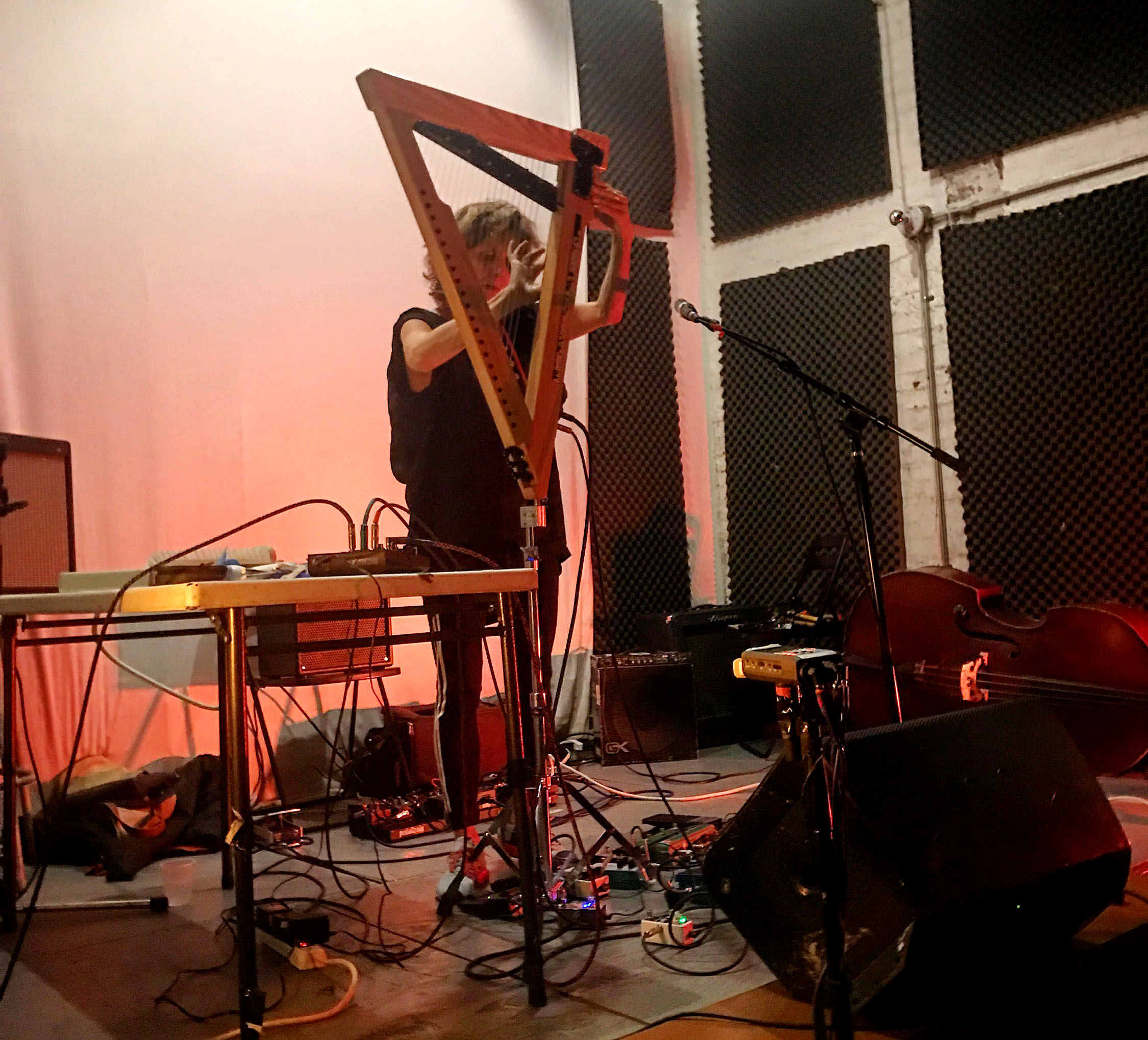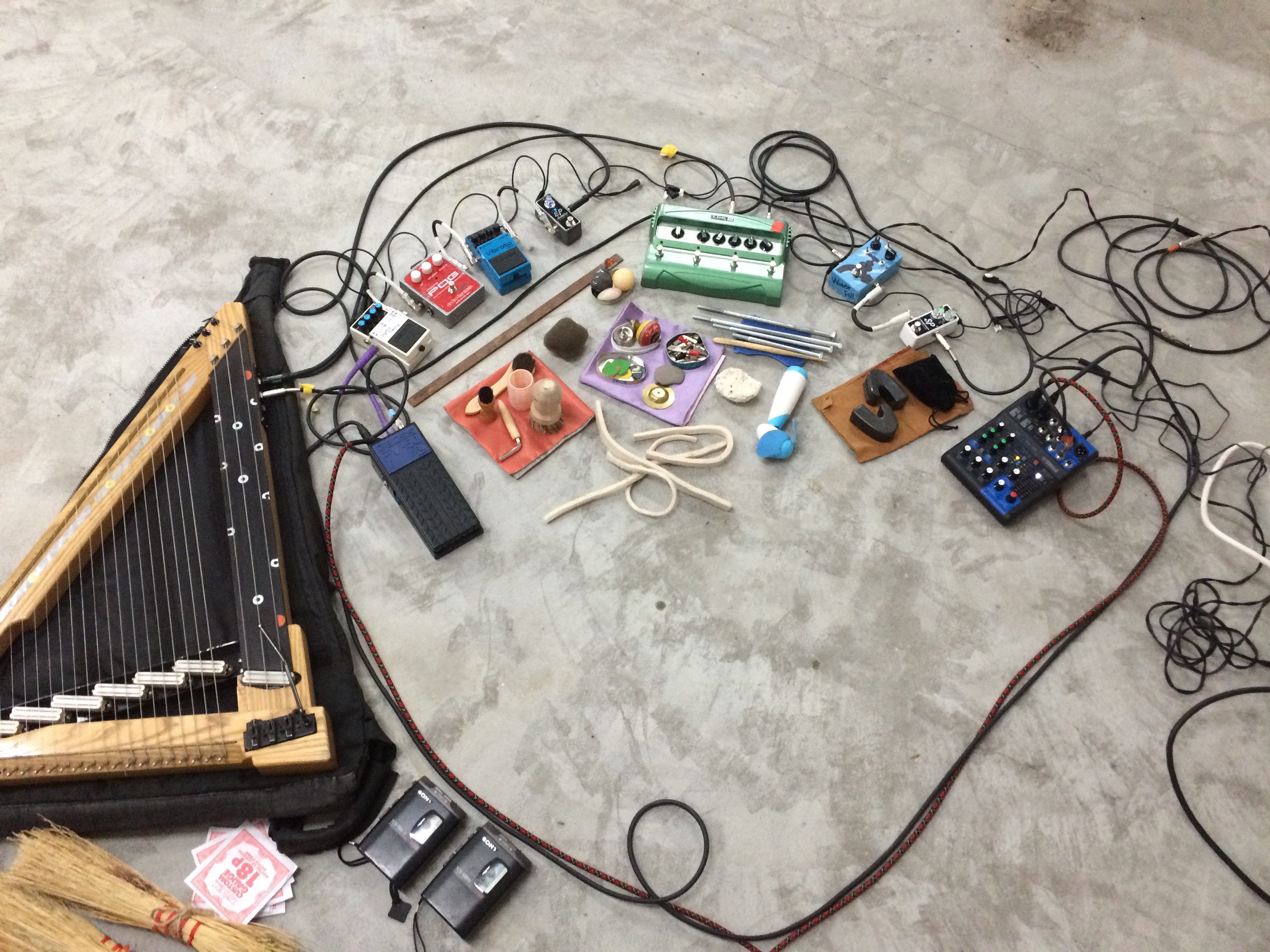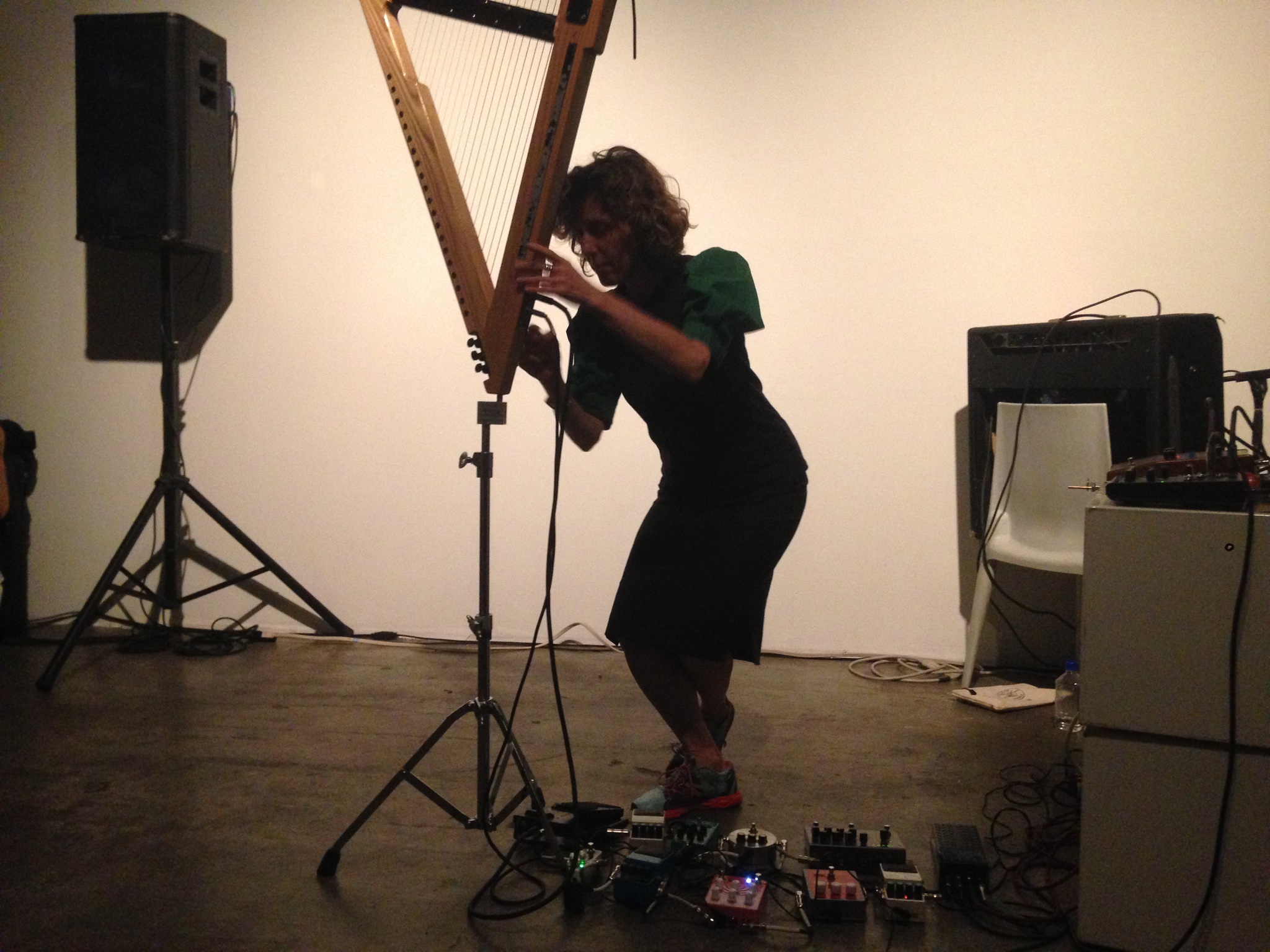







The evolution of my electric harp
Version 1 was made for the band Skeleton Crew when I joined in early 1985. It seemed the most direct solution for the harp to meet the sonic demands of the trio. Based on my design ideas the prototype was built by cellist Tom Cora and visual artist Julian Jackson, expanding my kit from accordion, drums, voice and keyboards. This version nested on my Korg CX3 organ, fitting into a homemade wooden encasement that attached to the keyboard with a c-clamp.
Version 2 was built by luthier Ken Parker, which he finished in one burning fourteen-hour session. This more refined instrument could be played free standing on modified drum hardware and it was newly equipped with a whammy bar. Over the next two years, Parker made subsequent changes improving the body by adjusting its shape and weight.
Sound artist Douglas Henderson contributed to significant design features on the next versions of the instrument. Although not known professionally as an instrument builder, he had built several guitars for himself as well as a beautiful double neck guitar for Elliott Sharp. His improvements included new placement of the pickups, continued adjustments to the overall shape and weight of the frame, and the surprisingly profound change of adding ebony to the whammy bar side of the harp, creating an infinitely better sounding and more complex instrument.
Initially, Henderson made changes to the existing harp that had been built by Parker. In 2003, he built Version 3, a new instrument. Henderson continued to refine his design and contributed his considerable expertise in construction, electronics, and materials. He fabricated all of the components for the harp: the metal casings to house wires, the brass bridges, the modified guitar tuning hardware and the modified metal drum stand. This is the electric harp that I use today. The instrument continues to surprise and inspire me in its freshness and astounding capabilities as a sound making device.